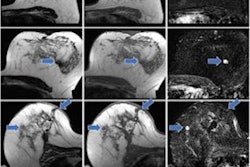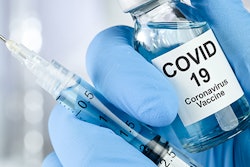
MRI is the best supplemental imaging method when it comes to detecting breast cancer in dense breasts in average-risk women, according to research published January 31 in Radiology.
A team led by Dr. Heba Hussein, PhD, from the University of Toronto found in an analysis of over 261,000 screened women that MRI detects significantly more cancers than ultrasound or digital breast tomosynthesis (DBT).
"Our results confirm the expected higher cancer detection rate of breast MRI as an adjunct breast screening modality in women with dense breasts and mammography negative for cancer, which has been widely documented in the high-risk population," Hussein and colleagues wrote.
Breast density is a known risk factor in the breast imaging community due to the fact that conventional screening mammography is limited in detecting cancer in dense breast tissue. Supplemental imaging methods have been explored in identifying cancers in these high-risk women, but the investigators noted that clinical guidelines that recommend any one modality over another in this area are sparse.
MRI has shown promise in detecting cancers in dense breasts, but it is also expensive, more limited in its availability, and can produce high false-positive rates.
Hussein and colleagues sought to analyze screening performance measures for a variety of supplemental breast imaging modalities for non-high-risk women with dense breasts who also have a negative mammogram. They conducted a review that included 22 studies that reported data from 261,233 screened women. Out of these, 132,166 had dense breasts and a negative mammogram; supplemental imaging modalities detected 541 cancers missed on mammography.
The review found that MRI was statistically significantly superior to other modalities in incremental cancer detection rates. This rate is the number of cases of cancer detected only at the supplemental imaging method divided by the total number of screening examinations performed, reported as a rate per 1,000 screenings.
| Comparison between imaging modalities for detection cancer in dense breasts | ||||
| Cancer detection rate per 1,000 | Handheld ultrasound | Automated whole breast ultrasound | DBT | MRI |
| Incremental (additional) cancers | -0.35 | -0.26 | -0.14 | 1.54 |
| Invasive cancers | -0.30 | -0.24 | -0.22 | 1.31 |
| In situ cancers | -0.54 | -1.27 | -0.29 | 1.91 |
The researchers also found no significant differences in positive predictive values for recall and biopsies performed, though they wrote that this may be due to fewer MRI studies included in the analysis.
Despite the results, Hussein and co-authors noted that it is too soon to advocate for mainstream implementation of supplemental breast MRI in women with dense breasts, urging more studies to compare other modalities and their effectiveness and assess mortality reductions and cost-effectiveness.



















